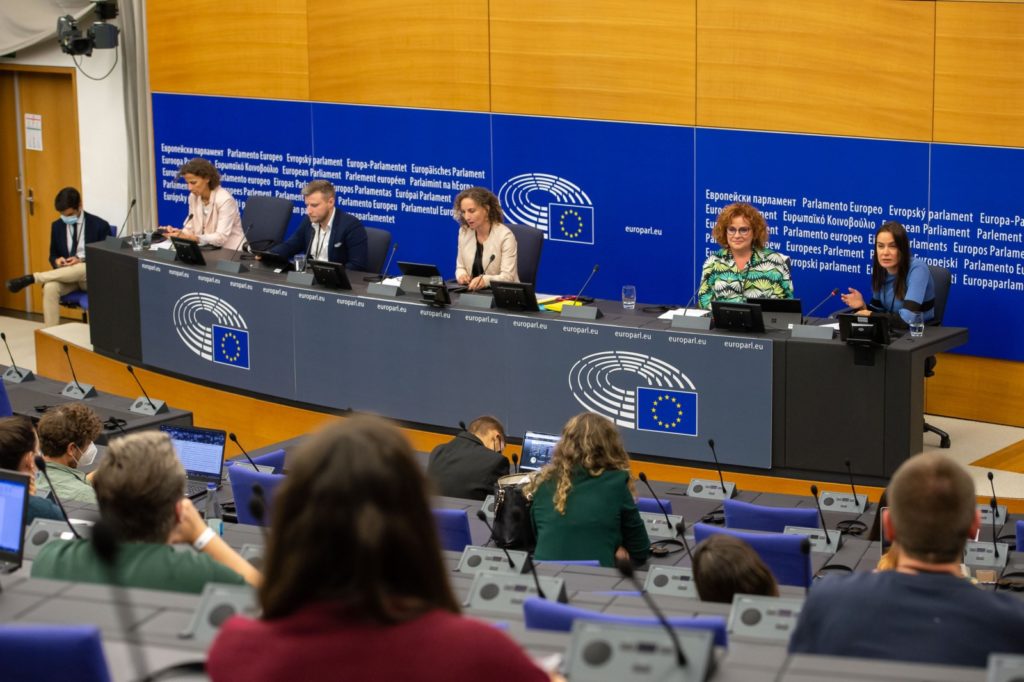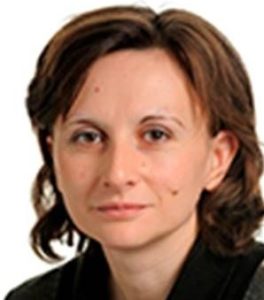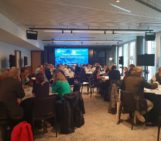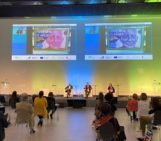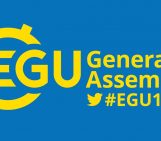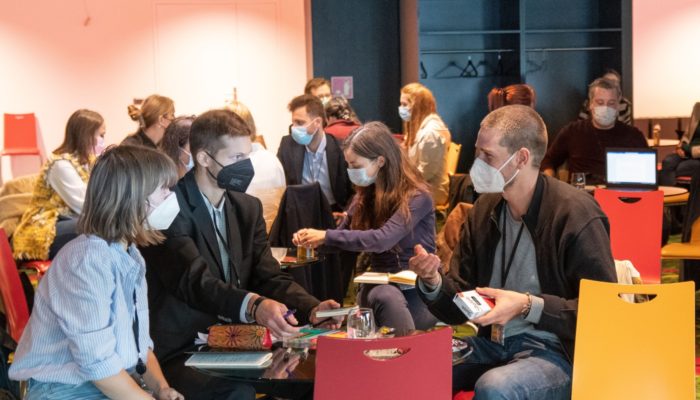
This month’s GeoPolicy blog post introduces the European Science-Media Hub (ESMH) along with its key initiatives. It also takes a deeper dive into the organisation through a Q&A that we were thrilled to have with the Head of the European Parliament’s Scientific Foresight Unit Theo Karapiperis and the coordinator of the ESMH Svetla Tanova-Encke.
In 2017, the European Parliament’s Panel for the Future of Science and Technology (STOA) launched the European Science-Media Hub (ESMH) with the aim to create a network among scientists, journalists and policymakers, and increase the effectiveness of science journalism and science communication. The ESMH also promotes reliable, science-based information and knowledge through the dissemination of accurate scientific information.
The European Science Media Hub’s initiatives
The ESMH has several initiatives that promote science-based information and help to connect scientists, policymakers, and journalists.
Online and in-person events
The ESMH hosts events that not only connect and inform scientists, policymakers, and journalists but that also offer science communicators the opportunity to improve their ability to identify trustworthy sources and report on sound science. The ESMH will be announcing their 2022 events, carefully designed with COVID restrictions in mind, soon – you can keep an eye on the upcoming events page for more details!
Publications
The ESMH produces a number of articles, interviews, media reviews, and videos on topics and issues that are important to policymakers, journalists, citizens, and scientists. Many of the articles posted on the ESMH website are written by external science communication experts. If you want to contribute to ESMH publications, you can apply here to join the ESMH’s list of communication and scientific experts.
Tackling the ‘Infodemic’
Since the start of the pandemic, the ESMH has started collaborating with the World Health Organisation to help tackle the Infodemic – the over-abundance of both accurate and false information. This project aims to help citizens navigate the information flow and find answers to their questions in knowledge-based science news. The resources hosted by the ESMH include a list of relevant initiatives tackling the spread of false Covid-19 information, monthly reports that collect the false Covid-19 claims that are trending on selected social media, a series of interviews with experts on dis- and misinformation, and thematic news articles.
Last month, I was able to take a deeper dive into the work of the ESMH by asking Theo Karapiperis and Svetla Tanova-Encke some more specific questions about what makes the ESMH so special!
Theo Ka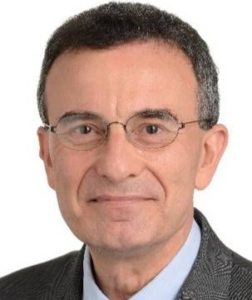 rapiperis is the Head of the European Parliament’s Scientific Foresight Unit (STOA), which encompasses the STOA Secretariat, the Scientific Foresight Service, and the European Science-Media Hub. He worked in basic and applied research before joining the European Parliament, first in the Press Service and the European Parliament’s Committee on Industry, Research and Energy Secretariat, and then as Head of Unit for the Policy Department for Economic and Scientific Policy, and STOA.
rapiperis is the Head of the European Parliament’s Scientific Foresight Unit (STOA), which encompasses the STOA Secretariat, the Scientific Foresight Service, and the European Science-Media Hub. He worked in basic and applied research before joining the European Parliament, first in the Press Service and the European Parliament’s Committee on Industry, Research and Energy Secretariat, and then as Head of Unit for the Policy Department for Economic and Scientific Policy, and STOA.
Svetla Tanova-Encke is the coordinator of the ESMH. Before joining in February 2018, Svetla worked in the European Parliament’s Directorate‑General for Communications for 10 years. She has a journalist background.
What do you see at the ESMH’s greatest achievements?
The ESMH is a relatively new project and we still consider it “work in progress”. We hope to further develop and establish ourselves as an authoritative, relevant, and reliable platform for scientists and media who are interested in solid science communication and promotion of science evidence against misinformation and false news.
For us, engaging with young Europeans is crucial. Organising events in the European Parliament for young European journalists and communicators that discuss new technologies, climate change and disinformation is an extremely rewarding experience.
We are also proud of the collection of interviews we did with scientists researching the phenomena of misinformation and disinformation in the context of the pandemic. There is a great need for knowledge sharing and cooperation in this field.
How has the work of the ESMH changed during the pandemic?
The pandemic hit us hard because it forced us to cancel many events, debates, and workshops with journalists and researchers which are at the heart of our project. But at the same time, the pandemic placed science and scientific information in the spotlight. Reliable sources of information became more important than ever. For us it was immediately clear: as a project aiming to promote scientific evidence, the ESMH had to react quickly and address the need for reliable and timely science information – both for Members of the European Parliament and for citizens at large.
In the early months of the crisis, we launched the initiative ‘Listen to the experts’, where we tried to provide our audience with scientific expertise via interviews with some of the best European virologists and immunologists. Later on, we complemented our efforts by tackling the Infodemic, creating a series of articles and reports shedding light on false online narratives related to Covid-19 and publications highlighting the work of researchers who deal with disinformation phenomena.
How can EGU members get involved with the ESMH?
We are in the process of creating a network of science journalists, researchers, science organisations, and institutions. We have different inclusive projects, from participating in events and workshops to preparing publications and reports. I would encourage communicators to apply for our Call for Expression of Interest, which enables them to join our list of potential contributors.
The European Parliament’s Panel for the Future of Science and Technology (STOA), which launched the ESMH, also offers many possibilities for scientists, communicators, and other interested citizens who are eager to better understand how science advice for policy works or want to know more about the methodology of technology assessment and scientific foresight.
How would you like to see the ESMH grow and develop? What are your hopes for its future?
We strongly believe that policymakers, scientists, and journalists can work better together to promote science communication to all citizens. We hope to establish ourselves as a reliable platform for such dialogue and we are open to exchange and collaborate with similar initiatives.
Our main objective will continue to be providing our members, media, and European citizens with sound and trustworthy information about new scientific developments. We will continue to offer opportunities for journalists and other communicators to attend physical or online seminars and trainings. We hope to become a respected and reliable partner for communicators from all over Europe who want to improve their ability to identify trustworthy sources of information and report on sound science.
Importantly, to fulfil our mission, we need to better understand the dynamics of information and discussions on social media, and to explore how they are influencing our perceptions about science, technology, and other topics.
This will enable us to fight disinformation more effectively, by making evidence-based stories accessible and appealing to lawmakers and non-experts immersed in a sea of confusing narratives, bringing more evidence into the debates and engaging people in a meaningful dialogue about science and tech
A big thank you to two Theo and Svetla for taking the time to answer our questions!

